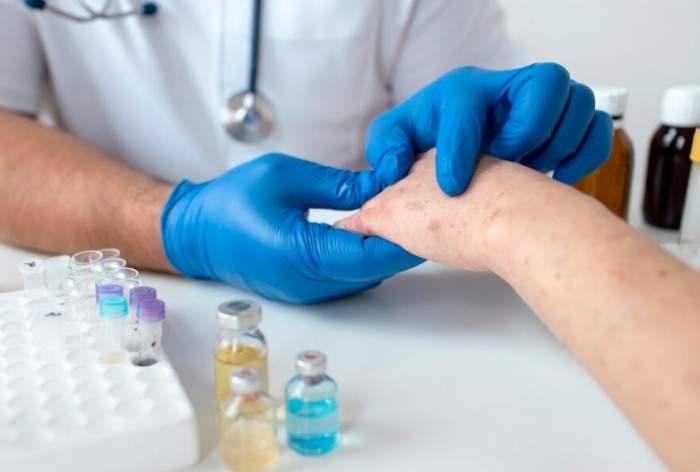Monkeypox cases are on the rise across the world. With cases increasing in neighbouring countries like Pakistan, India has been put on high alert. Read on to know what experts say about the risk of monkeypox in India.
The mpox virus has been a catalyst for raising public health alarm. The World Health Organization (WHO) has already declared monkeypox a global health emergency. Cases have been reported in Sweden and Pakistan, as well as the Democratic Republic of Congo (DRC). India has also been put on high alert, with health authorities issuing advisories for airports and hospitals.
Mpox: Should we be worried?
The risk of a resurgence of Mpox infection, formerly known as monkeypox, is very low in India at the moment and there is no need to panic, health ministry sources said after the WHO declared the disease a public health emergency of international concern.
Official sources said the last case of monkeypox in India was reported in Kerala in March this year.
According to official data, 30 laboratory-confirmed cases of monkeypox have been reported in India since 2022.
The health ministry may write to entry points such as airports and seaports to be alert and vigilant and deal with suspected monkeypox cases as per guidelines in terms of isolation and treatment, an official source told PTI.
“At present, the risk of an increase in monkeypox infection is very low in India and there is no need to panic,” the official said.
Union Health Minister JP Nadda is likely to hold a meeting with officials from the ministry, NCDC and ICMR on Saturday.
On Wednesday, the WHO said the rise in Mpox in the Democratic Republic of the Congo (DRC) and a growing number of countries in Africa constitutes a public health emergency of international concern (PHEIC) under the International Health Regulations (2005) (IHR).
This is the second time the viral infection has been designated as PHEIC.
According to the WHO, monkeypox is a viral zoonosis (a virus that is transmitted from animals to humans) with symptoms similar to those of smallpox, although clinically less severe.
Monkeypox typically causes fever, rash, and swollen lymph nodes and can lead to a number of medical complications. It is usually a self-limiting illness with symptoms lasting two to four weeks.
The “Guidelines for the Management of Monkeypox Disease” published by the Center in 2022 state that human-to-human transmission occurs primarily through large respiratory droplets that generally require prolonged close contact.
It can also be transmitted by direct contact with bodily fluids or lesions, and by indirect contact with lesion material, such as through contaminated clothing or bedding of an infected person. Transmission from animal to human can occur through bites or scratches from infected animals or through the preparation of wild animal meat.
The incubation period is typically six to thirteen days, and the case fatality rate for monkeypox has historically ranged from 11 percent in the general population to higher among children. In recent times, the case fatality rate has hovered between three and six percent.
Symptoms include lesions that typically appear one to three days after the onset of fever and last two to four weeks. They are often described as painful until the healing phase, when they begin to itch. According to the guidelines, monkeypox has a marked predilection for the palms of the hands and soles of the feet.
In July 2022, the multi-country Mpox outbreak was declared a PHEIC as it spread rapidly through sexual contact in a number of countries where the virus had not been detected before. The PHEIC was declared over in May 2023 following a sustained decline in cases globally.
(With PTI inputs)
